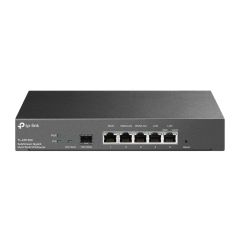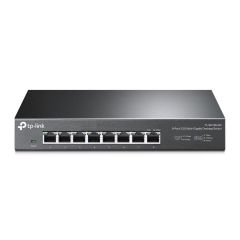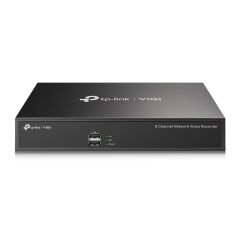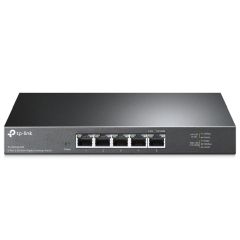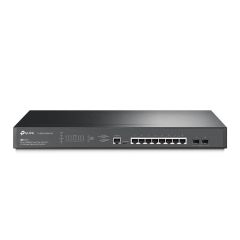What This Product Does
Designed for workgroups and departments, TL-SG5412F from TP-LINK provides full set of layer 2 management features. It delivers maximum throughput where you need it — to high-performance workgroups at the edge of the network, or as an aggregation layer device in business networks. Moreover, TL-SG5412F switch also comes equipped with 4 1000BASE-T ports, giving you greater network flexibility.
This TP-LINK L2 managed switch has robust security and management features. An advanced Access Control List (ACL, L2 to L4) and the TP-LINK strong safeguard provide security coverage from core to edge and protect against broadcast storm, ARP and Denial-of-Service (DoS) attacks, etc. Quality of Service (QoS, L2 to L4) provides enhanced traffic management capabilities to move your data smoother and faster. Anymore, the easy-to-use web management interfaces, along with CLI, SNMP and RMON, mean faster setup and configuration with less downtime. For workgroup and departments requiring cost-sensitive Layer 2 Switch, and additional Gigabit capability, TP-LINK L2 fully managed Switch TL-SG5412F can provide you the ideal access-edge solution.
High Switching Capacity
TP-LINK’s L2 managed switch TL-SG5412F provides non-blocking switching solutions for gigabit connections and switching capacity with a non-blocking aggregated bandwidth of 24Gbps. It provides 12 gigabit ports and 4 combo RJ45 ports. With this high switching capacity, TL-SG5412F can markedly enhance your network throughput.
Virtual Stackable
IP Clustering allows up to 32 TL-SG5412F switches to be managed by a single IP, regardless of geographical locations. With all units identified by a single IP address, the stack could be configured, monitored.
Comprehensive Security Strategy
Access Control Lists (ACL, L2 to L4) restrict access to sensitive network resources by denying packets based on source and destination MAC address, IP address, TCP/UDP ports and even VLAN ID. This is done by hardware, so switching performance would not be compromised. Moreover, the TL-SG5412F switch supports 802.1X authentication, which is used in conjunction with a RADIUS server to require some authentication information before access to the network is allowed. And more, it supports Guest VLAN to enable the non-802.1X clients to access the specific network resource. In addition, IP-MAC-Port-VID Binding, Port Security, Storm control, DHCP Snooping and IP Source Guard support can protect against broadcast storms, ARP and Denial-of-Service (DoS) attacks, etc. Regarding to the DoS defending, TL-SG5412F provides you some typical DoS attacks to select. You can protect these attacks more easily ever than before. TL-SG5412F will provide you robust security to the network.
Enterprise Level Manageability and Resiliency
TL-SG5412F supports various user-friendly standard management features, such as intuitive web-based Graphical User Interface (GUI) or industry-standard Command Line Interface (CLI), either administration traffic can be protected through SSL or SSH encryptions. SNMP (v1/2/3) and RMON support enables the switch to be polled for valuable status information and send traps on abnormal events. This sharing of vital management information saves time and money. With link aggregation, spanning tree protocol (STP/RSTP/MSTP) and virtual stack, a highly intelligent and scalable topology could be established, fulfilling the enterprise customers´ requirement of building a unified, resilient network.
Optimized Voice and Video Applications
To integrate voice, data and video service on one network, TL-SG5412F applies rich QoS policies. Administrator can designate the priority of the traffic based on a variety of means including IP or MAC address, TCP or UDP port number, etc, so voice and video are always clear, smooth and jitter free. In conjunction with the Voice VLAN the switch supporting, the voice applications will operate with much smoother performance. For other multimedia-on-demand application such as IPTV, TL-SG5412F provides advanced features for easy stream management. For example, IGMP snooping ensures the switch intelligently forward the multicast stream only to the appropriate subscribers while IGMP throttling & filtering restrict each subscriber on a port level to prevent unauthorized multicast access.

















